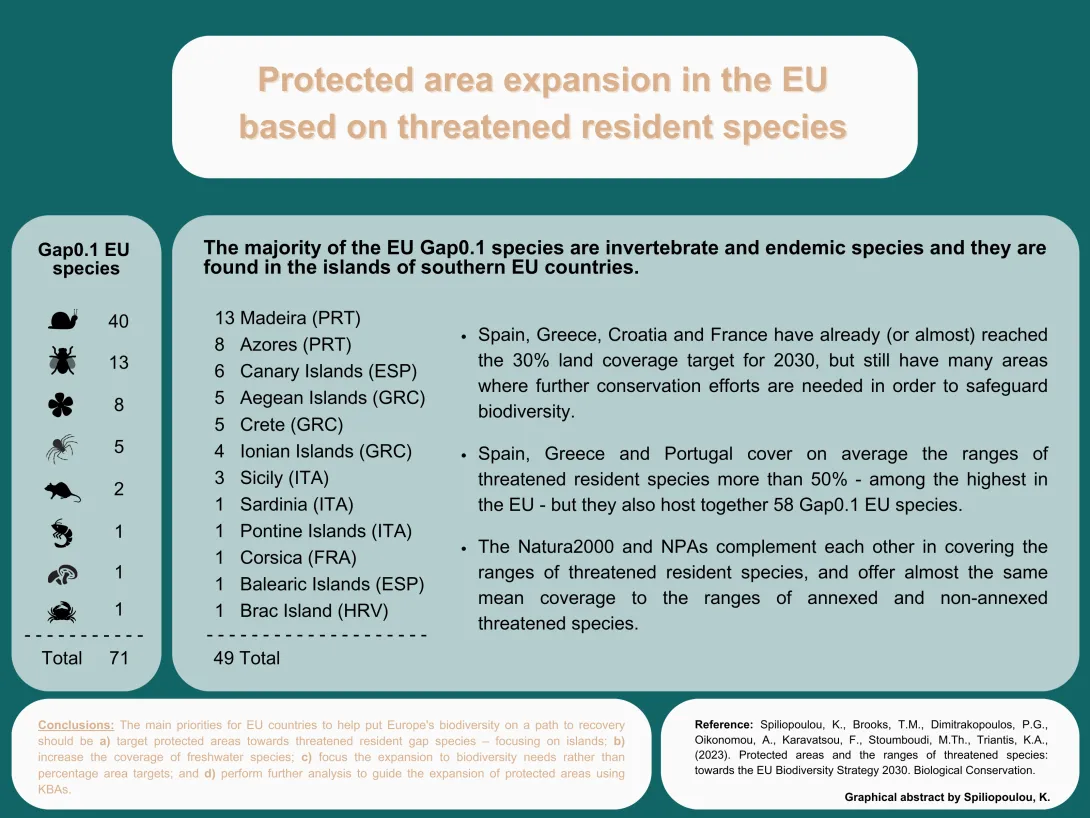Protected area expansion in the European Union based on threatened resident species

A scientific publication shows that 49 out of the 71 threatened resident species in the European Union, which are located wholly outside of the protected area network, are invertebrates and endemics, and they are found on islands of southern EU countries. Konstantina Spiliopoulou and the National and Kapodistrian University of Athens group of the GaP project led this work, which was published in Biological Conservation in August 2023.
The study shows that protected area expansion should focus on biodiversity needs rather than solely on percentage area targets. Spain, Greece, Croatia, and France have already (or almost) reached the 30% land coverage target for 2030, but there are still many areas where further conservation efforts are needed to safeguard biodiversity. At the same time, Spain, Greece, and Portugal cover, on average, the ranges of threatened resident species >50% — among the highest in the EU — so gaps in protection are not a result of low efforts but of higher needs in these countries.
Further analysis is needed to identify places that maximise the ability to conserve biodiversity and prevent extinctions, and Key Biodiversity Areas can be a valuable tool.
Reference
Spiliopoulou, K., Brooks, T.M., Dimitrakopoulos, P.G., Oikonomou, A., Karavatsou, F., Stoumboudi, M.T. and Triantis, K.A., 2023. Protected areas and the ranges of threatened species: Towards the EU Biodiversity Strategy 2030. Biological Conservation, 284, p.110166. doi.org/10.1016/j.biocon.2023.110166
